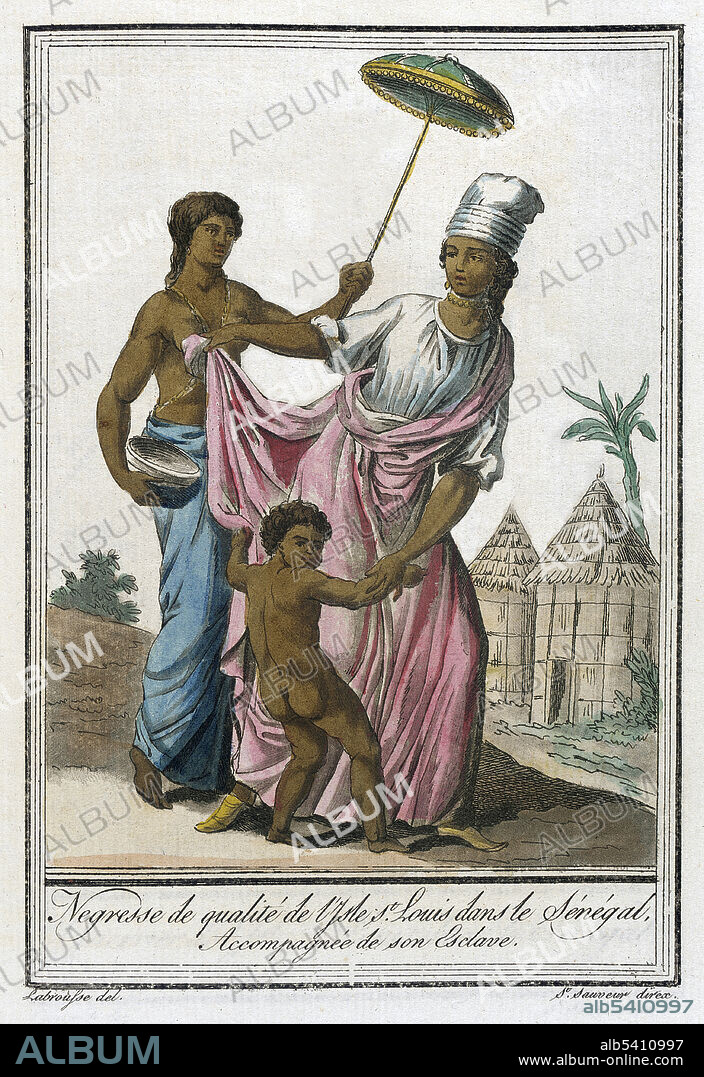alb5410997
West Africa, Saint-Louis Signare,1797

|
Ajouter à une autre Lightbox |
|
Ajouter à une autre Lightbox |



Avez-vous déjà un compte? S'identifier
Vous n'avez pas de compte ? S'inscrire
Acheter cette image

Titre:
West Africa, Saint-Louis Signare,1797
Légende:
Voir la traduction automatique
Negresse de Qualité de l'Isle St. Louis dans le Sénégal. Accompagnée de son Esclave. Quality Negress of St. Louis Island in Senegal Accompanied by her slave. Saint-Louis (Ndar) is the capital of Senegal's Saint-Louis Region. Saint-Louis was established in 1659 by French traders on an uninhabited island called Ndar. It was the first permanent French settlement in Senegal. The fortified factory commanded trade along the Senegal River. Slaves, hides, beeswax, ambergris and, later, gum arabic were exported. A Franco-African Creole, or Métis, merchant community characterized by the famous signares, or bourgeois women entrepreneurs, grew up in Saint-Louis during the 17th and 18th centuries. These women of color managed to gain some individual assets, status, and power in the hierarchies of the Atlantic Slave Trade. The Métis were important to the economic, social, cultural and political life of the city. They created a distinctive urban culture characterized by public displays of elegance, refined entertainment and popular festivities. Saint-Louis became capital of the federation of French West African colonies in 1895, but relinquished this role to Dakar in 1902. Costumes of Different Countries, hand-tinted engraving by Labrousse, published by Jacques Grasset de Saint-Sauveur, 1797.
Crédit:
Album / Science Source / Los Angeles County Museum
Autorisations:
Modèle: Non - Propriété: Non
Questions sur les droits?
Questions sur les droits?
Taille de l'image:
3300 x 4800 px | 45.3 MB
Taille d'impression:
27.9 x 40.6 cm | 11.0 x 16.0 in (300 dpi)
Mots clés:
 Pinterest
Pinterest Twitter
Twitter Facebook
Facebook Copier le lien
Copier le lien Email
Email
